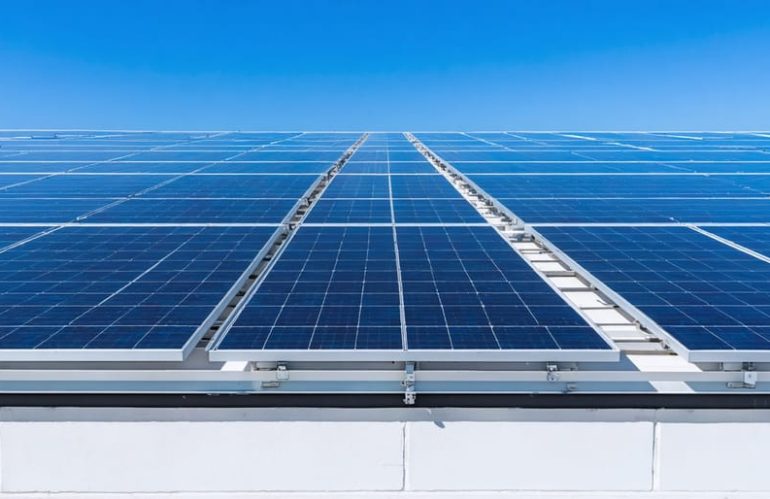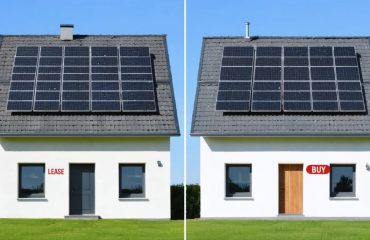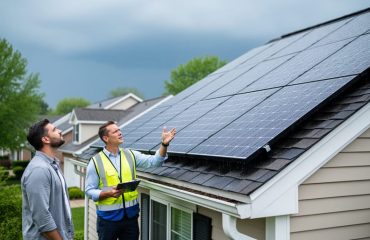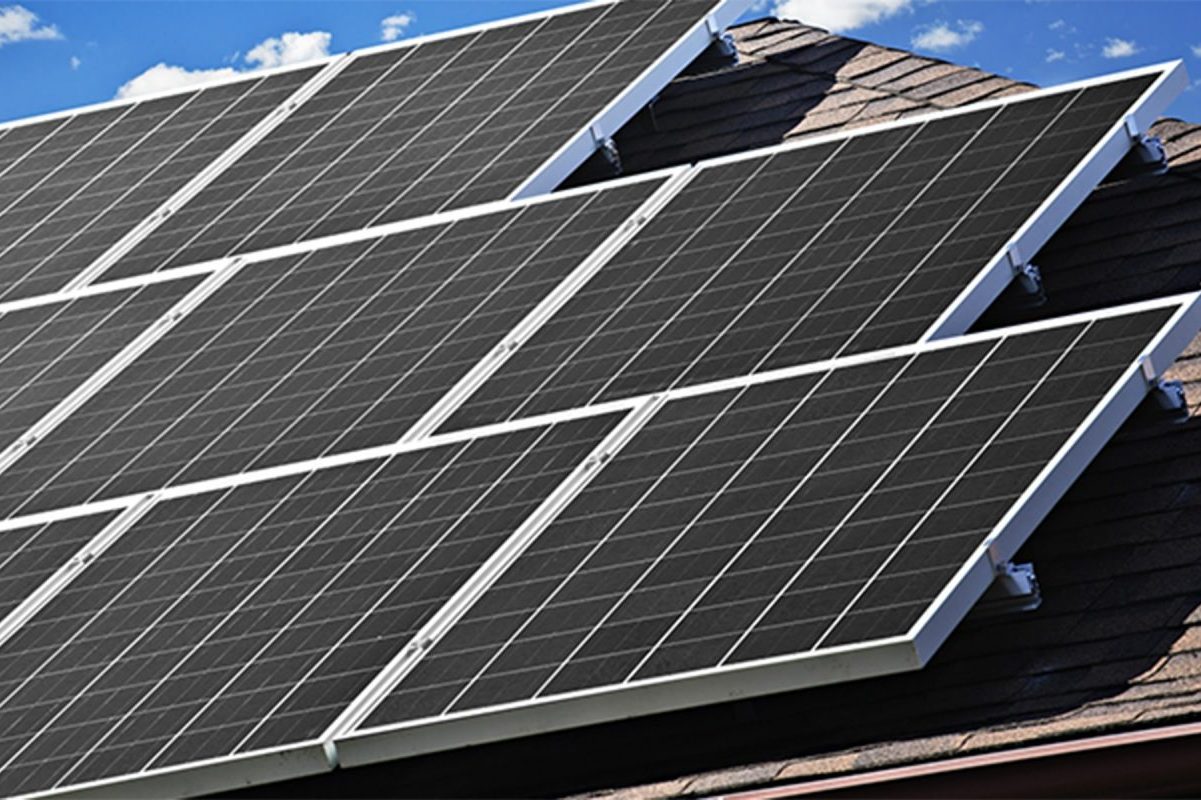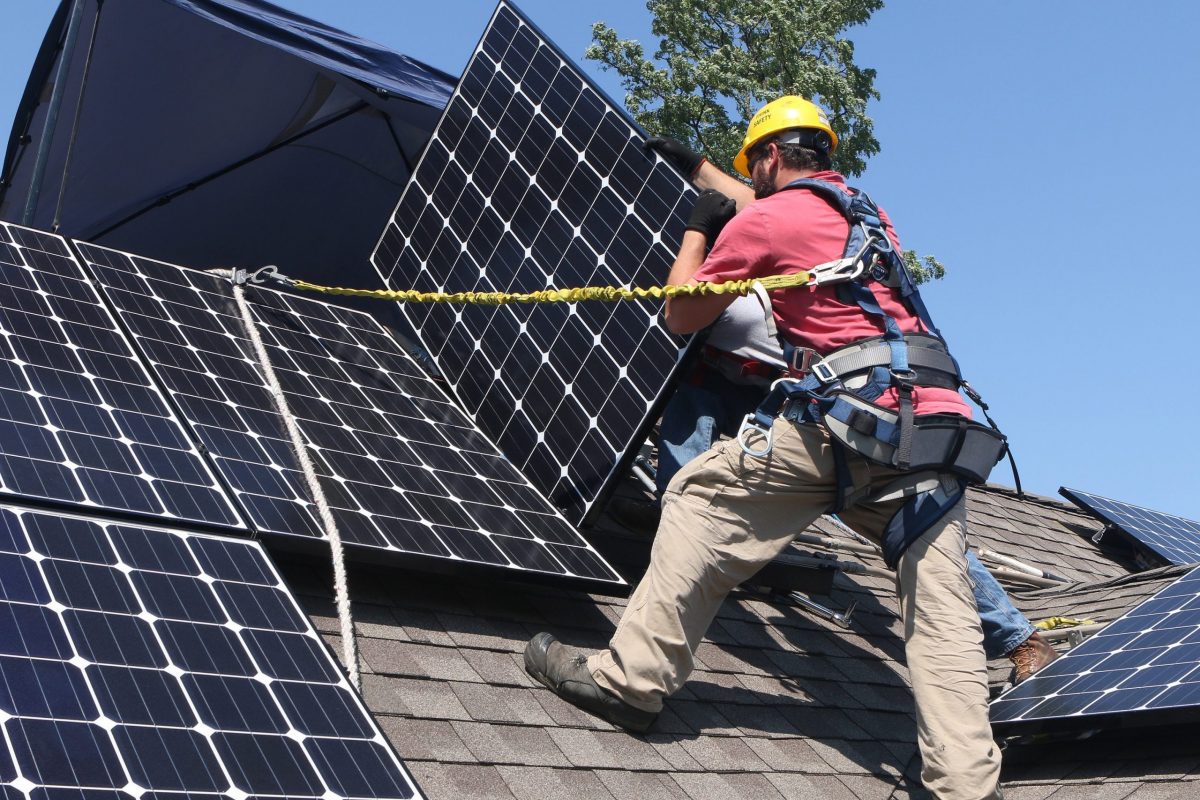Schools across America are discovering a powerful solution to budget constraints and environmental responsibility: solar energy installations. These rooftop power plants not only slash electricity costs by 60-80% but also create living laboratories for students to explore renewable energy firsthand. From California to Connecticut, educational institutions are transforming unused roof space into revenue-generating assets while teaching the next generation about sustainable technology.
The financial impact is compelling: a typical K-12 school saves $43,000 annually from solar panels, with many institutions using power purchase agreements (PPAs) to implement solar with zero upfront costs. These savings are redirecting crucial funds back into classrooms, supporting educational programs, and hiring additional teachers. Beyond the financial benefits, solar schools demonstrate environmental leadership, reducing carbon emissions equivalent to planting 400 trees per year.
This innovative approach to educational infrastructure represents a triple win: schools reduce operating costs, students gain hands-on STEM learning opportunities, and communities benefit from cleaner air and reduced environmental impact. As energy costs continue to rise, solar installations on schools have emerged as a practical solution that combines fiscal responsibility with environmental stewardship.
Why Schools Are Perfect for Solar Power
Large Roof Space, Big Savings
Schools are uniquely positioned to maximize solar energy potential thanks to their expansive, typically flat roof spaces. The average K-12 school building offers between 35,000 to 140,000 square feet of usable roof area – prime real estate for solar panel installation. This generous space allows schools to install larger solar arrays that can generate significant amounts of electricity, often enough to meet 60-80% of their annual energy needs.
Most school buildings also have minimal roof obstructions compared to other commercial buildings, making installation more straightforward and cost-effective. Their flat or slightly pitched roofs are ideal for optimal panel positioning, ensuring maximum sun exposure throughout the day. Additionally, schools often have newer, well-maintained roofs that can easily support solar installations without requiring costly structural modifications.
The substantial roof space also allows schools to plan for future expansion of their solar systems. As energy needs grow or additional funding becomes available, schools can easily add more panels to their existing arrays, making their initial solar investment even more valuable over time.
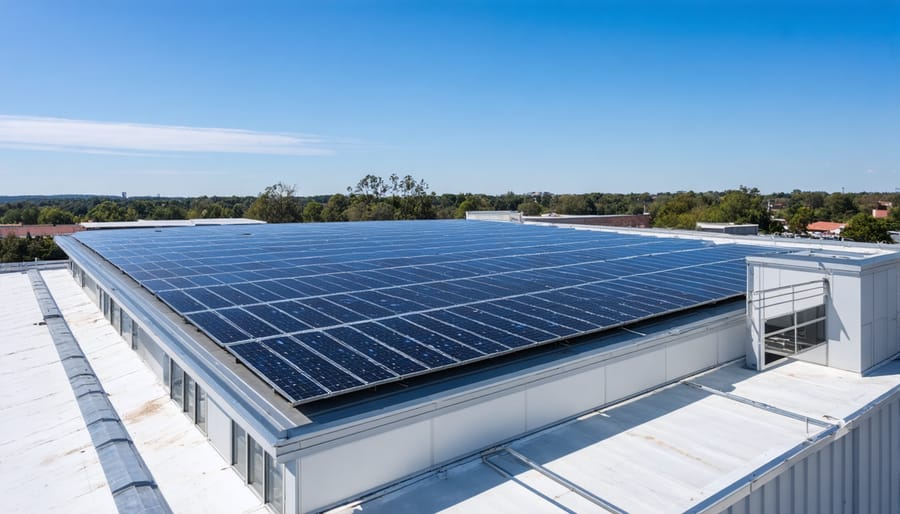
Peak Energy Match
One of the most compelling advantages of solar installations on schools is the natural alignment between peak solar production and school operating hours. Schools typically operate during daylight hours, precisely when solar panels generate the most electricity. This synchronization means that schools can directly use the power they produce, maximizing the benefits of their solar investment.
During the peak sunshine hours of 9 AM to 3 PM, schools experience their highest energy demand for lighting, HVAC systems, computers, and other educational equipment. This timing perfectly matches solar panels’ most productive period, allowing schools to offset a significant portion of their daytime electricity consumption with clean, renewable energy.
This alignment is particularly beneficial during hot summer months when air conditioning demands are highest and solar production reaches its peak. While many schools operate with reduced summer schedules, the energy generated during these months can either power summer programs or be fed back into the grid, providing additional revenue through net metering programs.
Smart Financial Solutions for School Solar Projects
Power Purchase Agreements (PPAs)
Power Purchase Agreements (PPAs) offer schools an attractive pathway to solar adoption without significant upfront costs. Under a PPA, a third-party developer installs, owns, and maintains the solar system on school property. The school then agrees to purchase the electricity generated by the system at a predetermined rate, typically lower than traditional utility prices.
This arrangement provides several key advantages for schools. First, it eliminates the need for substantial initial capital investment, making solar accessible even with limited budgets. Schools can start saving on energy costs immediately, often seeing 10-30% reductions in their electricity bills from day one.
PPAs also transfer maintenance responsibilities and performance risks to the system owner, ensuring schools don’t have to worry about upkeep or repairs. The developer has a vested interest in maintaining optimal system performance since their revenue depends on electricity production.
Most PPAs include annual price escalators that are typically lower than historical utility rate increases, providing schools with predictable energy costs for 15-25 years. This long-term price stability helps with budgeting and protects against future utility rate hikes.
Additionally, schools can use PPAs as educational tools, incorporating real-world examples of renewable energy and sustainable business practices into their curriculum, making it a winning solution for both financial and educational objectives.
Government Grants and Incentives
Schools looking to embrace solar energy have access to numerous financial support options through various government programs. The federal government offers significant incentives, including the Investment Tax Credit (ITC), which can cover up to 30% of the installation costs. Additionally, many schools qualify for specific solar panel grants designed for educational institutions.
State-level programs vary but often provide substantial support. Many states offer performance-based incentives, rebates, and grants specifically for educational facilities. For example, California’s Clean Energy Jobs Act (Proposition 39) has provided millions in funding for school solar projects, while New York’s K-Solar program offers technical assistance and favorable financing terms.
Local utilities and municipalities frequently supplement these offerings with additional incentives. These may include reduced permit fees, expedited approval processes, and special utility rates for schools. Some districts can also take advantage of community-based fundraising programs and matching grants.
To maximize available funding, schools should consider combining multiple incentives. Many institutions have successfully stacked federal tax credits with state grants and local utility rebates, significantly reducing their initial investment. Working with experienced solar consultants can help schools identify and apply for all eligible funding opportunities, ensuring they receive the maximum financial benefit from their solar investment.
Community Solar Programs
Community solar programs offer schools an innovative way to embrace solar energy, even when on-site installation isn’t feasible. These programs allow schools to subscribe to or own a portion of a larger solar array located elsewhere in the community, making solar power accessible to institutions with limited roof space or structural constraints.
Through these initiatives, schools can purchase solar credits from nearby solar farms, reducing their electricity costs without the upfront expense of installing panels. This arrangement is particularly beneficial for urban schools or those in historic buildings where traditional solar installations may not be possible.
Many utility companies now offer specific community solar programs designed for educational institutions. These programs often come with educational components, allowing students to monitor energy production and consumption in real-time, creating valuable learning opportunities in science and environmental studies.
Schools can also serve as anchor subscribers in community solar projects, helping to make these initiatives more financially viable for the entire community. This leadership role often comes with preferential rates and terms, while demonstrating environmental stewardship to students and local residents.
By participating in community solar, schools can lock in predictable energy costs, reduce their carbon footprint, and support local renewable energy development – all while avoiding the maintenance responsibilities of owning solar panels directly.
Real Success Stories
Budget Impact
Schools across the country are reporting significant cost savings after installing solar panels, making a compelling case for the return on solar investment. Tucson Unified School District in Arizona, for example, saved over $300,000 in electricity costs during their first year of solar implementation, while California’s Kern High School District projects $80 million in savings over 25 years.
In Massachusetts, Arlington Public Schools reduced their annual energy costs by 47% after installing solar panels on five school buildings. The district now saves approximately $125,000 per year on utility bills. Similarly, New Jersey’s Middletown Township Public Schools expect to save $1.2 million annually through their comprehensive solar program spanning multiple campuses.
These savings aren’t limited to large districts. Small rural schools are also seeing impressive results. Iowa’s Waco Elementary School cut its electricity bills by 90% after installing a modest solar array, saving approximately $30,000 annually. These funds are being redirected to educational programs, technology upgrades, and facility improvements.
Many schools report breaking even on their solar investments within 7-10 years, particularly when taking advantage of available grants, tax incentives, and power purchase agreements. The long-term savings continue to accumulate well beyond the payback period, providing decades of reduced operating costs.
Educational Benefits
Solar installations on school campuses serve as powerful educational tools, transforming abstract concepts into tangible learning experiences. Students gain hands-on exposure to renewable energy technology through real-time monitoring systems that display energy production data, weather patterns, and environmental impact metrics.
Many schools incorporate their solar installations into STEM curricula, creating project-based learning opportunities across multiple subjects. In science classes, students analyze solar panel efficiency and environmental benefits. Math classes use actual energy production data for practical problem-solving exercises. Technology courses explore monitoring systems and data analysis, while engineering classes study solar system design and installation principles.
Teachers often develop solar-focused lesson plans that align with state educational standards, making renewable energy education both engaging and academically relevant. Some schools create student-led “green teams” that monitor energy usage, track cost savings, and develop sustainability initiatives based on their solar installation data.
The presence of solar panels also sparks discussions about career opportunities in renewable energy, introducing students to growing job markets in solar technology, environmental science, and sustainable engineering. Many schools partner with local solar companies to provide internship opportunities and career guidance, helping students envision future careers in the green energy sector.
This practical approach to renewable energy education creates environmentally conscious citizens while developing critical thinking and problem-solving skills essential for future success.
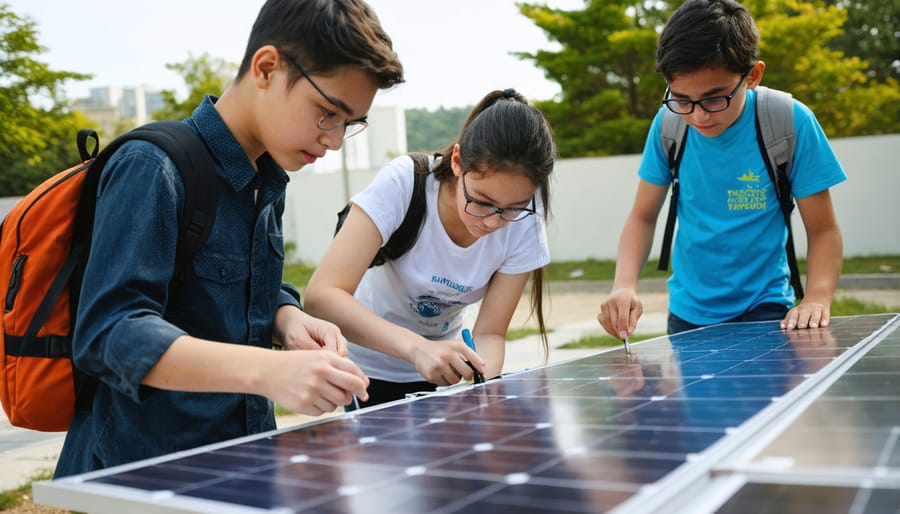
Getting Started with School Solar Projects
Initial Assessment
Before implementing a solar project for schools, a thorough initial assessment is crucial to determine feasibility and potential returns. Start by evaluating the school’s roof condition, orientation, and available space. South-facing roofs typically offer optimal sun exposure, though east and west-facing surfaces can also be viable options. Consider any shade from nearby buildings or trees that might affect solar panel efficiency.
Next, analyze the school’s current energy consumption patterns and utility costs. This data helps determine the appropriate system size and potential savings. Most schools can access their historical energy usage through utility bills or energy management systems. Professional solar contractors can use this information to model various system configurations and estimate energy production.
Financial considerations are equally important. Explore various solar financing options early in the planning process. Consider factors like initial installation costs, maintenance requirements, and projected energy savings. Many schools qualify for federal and state incentives, grants, or tax benefits that can significantly reduce upfront costs.
It’s also essential to assess structural requirements and local regulations. Have qualified engineers evaluate the roof’s load-bearing capacity and ensure compliance with local building codes. Check zoning laws and obtain necessary permits. Additionally, connect with your utility company to understand grid interconnection requirements and any available net metering programs that could enhance the project’s financial benefits.
Choosing the Right Partner
Selecting the right partners for your school’s solar project is crucial for long-term success. Start by creating a list of qualified solar installers with experience in educational facilities. Look for contractors who hold NABCEP certification and have completed similar projects in your area. Request references from other schools and visit their installations if possible.
When evaluating potential installers, ensure they conduct thorough site assessments and provide detailed proposals that include system size, expected energy production, and maintenance requirements. The best partners will offer comprehensive support throughout the project lifecycle, from initial planning to post-installation monitoring.
For financial partnerships, consider working with companies that specialize in school solar projects. Many offer power purchase agreements (PPAs) or solar leases specifically designed for educational institutions. Look for partners who understand state-specific incentives, grants, and tax benefits available to schools.
Key qualities to seek in both installation and financial partners:
– Proven track record with educational institutions
– Strong financial stability and longevity in the industry
– Transparent communication and detailed documentation
– Comprehensive warranty and maintenance support
– Understanding of local building codes and regulations
– Experience navigating educational bureaucracy
Remember to involve key stakeholders in the selection process, including facility managers, financial officers, and board members. Consider forming a selection committee to evaluate proposals and interview potential partners thoroughly.
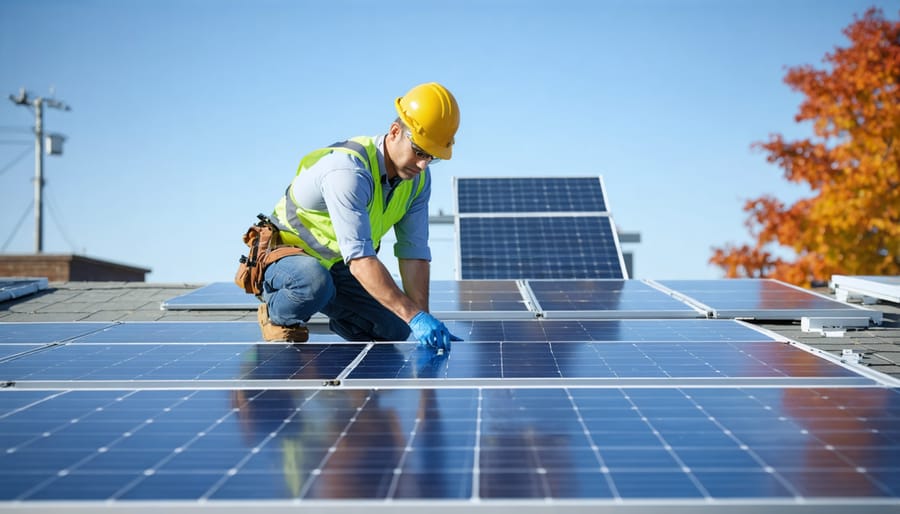
Solar energy in schools represents a powerful investment in both education and sustainability. The combination of reduced energy costs, environmental benefits, and educational opportunities makes solar installations a compelling choice for educational institutions. Schools that embrace solar power not only demonstrate environmental leadership but also create lasting positive impacts on their budgets and communities. By exploring available financing options, grants, and partnerships, schools can make the transition to solar energy more achievable than ever. Taking the first step toward solar adoption today can help secure a brighter, more sustainable future for generations of students to come. The time is right for schools to join the renewable energy revolution and become beacons of sustainability in their communities.

